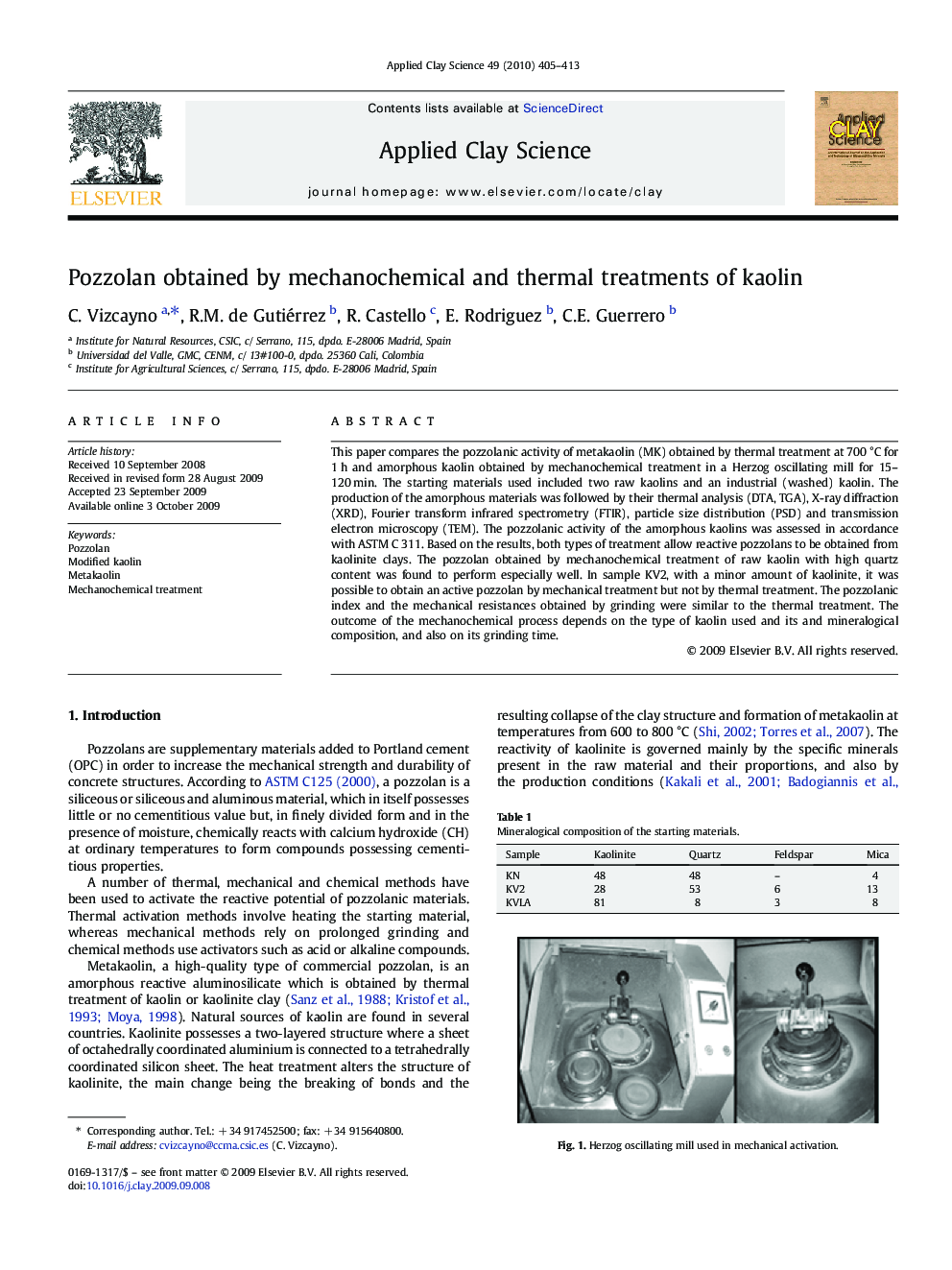| Article ID | Journal | Published Year | Pages | File Type |
|---|---|---|---|---|
| 1695756 | Applied Clay Science | 2010 | 9 Pages |
This paper compares the pozzolanic activity of metakaolin (MK) obtained by thermal treatment at 700 °C for 1 h and amorphous kaolin obtained by mechanochemical treatment in a Herzog oscillating mill for 15–120 min. The starting materials used included two raw kaolins and an industrial (washed) kaolin. The production of the amorphous materials was followed by their thermal analysis (DTA, TGA), X-ray diffraction (XRD), Fourier transform infrared spectrometry (FTIR), particle size distribution (PSD) and transmission electron microscopy (TEM). The pozzolanic activity of the amorphous kaolins was assessed in accordance with ASTM C 311. Based on the results, both types of treatment allow reactive pozzolans to be obtained from kaolinite clays. The pozzolan obtained by mechanochemical treatment of raw kaolin with high quartz content was found to perform especially well. In sample KV2, with a minor amount of kaolinite, it was possible to obtain an active pozzolan by mechanical treatment but not by thermal treatment. The pozzolanic index and the mechanical resistances obtained by grinding were similar to the thermal treatment. The outcome of the mechanochemical process depends on the type of kaolin used and its and mineralogical composition, and also on its grinding time.
